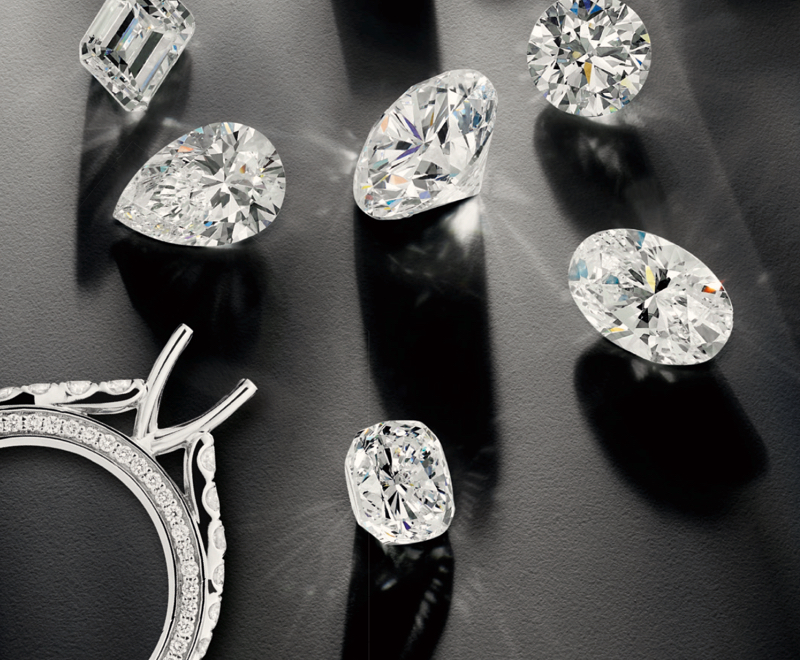When it comes to purchasing lab-grown diamonds, the decision between choosing a diamond graded the International Gemological Institute (IGI) or the Gemological Institute of America (GIA) often arises. Both are well-respected grading organizations, but they have different approaches when it comes to assessing lab-grown diamonds. In this article, we will explore the key differences between igi vs gia lab grown grading, helping you make an informed choice about your next diamond purchase.
What Are Lab-Grown Diamonds?
Lab-grown diamonds, also known as synthetic or cultured diamonds, are real diamonds that are created in a laboratory rather than formed naturally beneath the Earth’s surface. These diamonds are made using two primary methods: High Pressure High Temperature (HPHT) and Chemical Vapor Deposition (CVD). Despite being lab-created, these diamonds are chemically, physically, and optically identical to their natural counterparts. The only real difference is their origin.
The Role of Diamond Grading Organizations
Before diving into the comparison, it’s important to understand the role of diamond grading organizations like IGI and GIA. Both of these institutions evaluate diamonds based on the 4Cs: Cut, Color, Clarity, and Carat weight. The grading reports they provide help consumers understand the quality of a diamond and ensure that they are getting value for their money.
However, the grading criteria and methodology can vary slightly between organizations, which may influence the overall perception of the diamond’s quality.
IGI Lab-Grown Diamonds
The International Gemological Institute (IGI) is one of the most prominent names in the world of diamond grading, particularly when it comes to lab-grown diamonds. IGI is known for its detailed and precise grading reports, which include an assessment of the 4Cs as well as additional characteristics specific to lab-grown diamonds, such as the origin of the diamond.
One key aspect of IGI’s grading is its use of a special laser inscription to mark lab-grown diamonds, making it easy to distinguish them from natural diamonds. IGI’s reports are typically straightforward, providing customers with clear insights into the diamond’s quality. However, some jewelers and consumers perceive IGI’s grading system as being slightly more lenient than that of the GIA, particularly when it comes to evaluating color and clarity.
GIA Lab-Grown Diamonds
The Gemological Institute of America (GIA) is widely regarded as the gold standard in the diamond grading industry. GIA’s grading system is known for its rigor and precision, and the organization has been at the forefront of diamond grading for decades. GIA began offering grading services for lab-grown diamonds in recent years, and their approach has been met with widespread approval for its accuracy and transparency.
GIA reports for lab-grown diamonds are often considered more conservative than IGI reports, particularly in terms of clarity and color. The GIA is known for being stringent in its evaluations, which is why it is often the preferred grading institution for high-end jewelry buyers and investors. Lab-grown diamonds graded GIA also receive a clear indication of their synthetic nature, typically marked with a special laser inscription to differentiate them from natural diamonds.
Key Differences Between IGI and GIA Lab-Grown Diamond Grading
While both IGI and GIA offer reliable and reputable grading for lab-grown diamonds, there are several notable differences between the two:
- Grading Standards and Accuracy: The GIA is generally considered more conservative in its grading, especially when evaluating the clarity and color of diamonds. IGI, on the other hand, is sometimes perceived as slightly more lenient. This difference can affect the final grade of a lab-grown diamond.
- Lab-Grown Diamond Focus: IGI has been more focused on grading lab-grown diamonds from an earlier stage, whereas GIA only recently expanded its grading services to include lab-grown diamonds. As a result, IGI has a broader experience in grading synthetic diamonds, but GIA’s grading reputation is widely recognized in the industry.
- Report Details: Both grading institutions provide detailed reports on the 4Cs of a lab-grown diamond. However, GIA reports are often more thorough and considered the most comprehensive in terms of transparency. GIA reports also highlight whether the diamond is natural or synthetic, which adds another layer of trust for consumers.
- Perception and Reputation: GIA holds a long-standing reputation for its strict grading standards, making it the preferred choice for many high-end buyers and industry professionals. IGI, while still a respected institution, is sometimes perceived as offering slightly higher grades, which may not always match the expectations of those looking for the utmost accuracy.
Choosing Between IGI and GIA Lab-Grown Diamonds
When deciding between an IGI-graded or GIA-graded lab grown diamonds, consider your priorities as a buyer. If you value the strictest grading and transparency, GIA may be the better option for you. The GIA’s reputation for precision and its role in setting industry standards makes it a trusted choice for those who want to ensure they are getting the best possible value for their money.
On the other hand, if you are looking for a more budget-friendly diamond, an IGI-graded diamond could be a good option. IGI’s grading tends to be slightly more lenient, which may result in a better-looking stone at a lower price point. Additionally, IGI’s grading reports are easy to understand, making them a popular choice among first-time buyers.
Conclusion
Both IGI and GIA are reputable grading organizations that provide valuable information on the quality of lab-grown diamonds. The choice between the two ultimately comes down to personal preference and your specific needs as a buyer. Whether you prefer the meticulous standards of GIA or the comprehensive service of IGI, understanding their differences will help you make an informed decision when purchasing your next lab-grown diamond.

